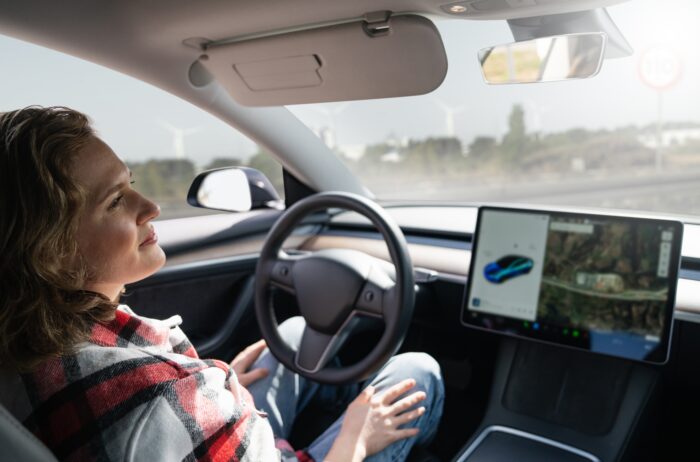
As autonomous vehicles revolutionize the way we travel, they also bring a new frontier of questions about liability when accidents happen. Unlike traditional car crashes, where fault is typically pinned on a driver, self-driving car accidents often involve a web of responsibility, spanning manufacturers, software developers, and even vehicle owners. Untangling this web requires a sharp understanding of cutting-edge technology and the critical data these vehicles generate. Black boxes and onboard systems are at the heart of these cases, recording the vehicle’s every move and decision. This data isn’t just numbers; it’s the story of what happened, and it’s often the key to holding the right party accountable.
At Skousen Gulbrandsen & Patience PLC, we embrace the challenges of this new era in transportation. With decades of experience and a forward-thinking approach, we’re ready to tackle the complexities of autonomous vehicle claims head-on. If you’ve been involved in a self-driving car accident, let us be your advocate in this rapidly evolving landscape. Contact Skousen, Gulbrandsen & Patience PLC today to ensure your rights are protected in the age of innovation.
Determining liability in a self-driving car accident requires a fresh approach to match the innovation of the vehicles themselves. Unlike traditional car accidents, where fault is often straightforward, autonomous vehicle crashes introduce a complex network of potential responsible parties. These vehicles rely on advanced technology, including sensors, software, and artificial intelligence, to make decisions on the road. When something goes wrong, pinpointing who is liable requires a deep dive into the vehicle’s systems and the data they generate. Innovative cars demand innovative product liability claims, and understanding the nuances of these cases is essential to ensuring justice is served.
Here are some of the parties who may be held liable in a self-driving car accident:
These cases require a thorough investigation and a strategic approach to identify the responsible party or parties. With the right legal representation, you can navigate the complexities of autonomous vehicle liability and ensure that those at fault are held accountable.
In autonomous car accident investigations, data is everything. Black boxes and onboard systems in self-driving vehicles record a wealth of information, from speed and braking patterns to sensor inputs and decision-making algorithms. This data provides a detailed timeline of events leading up to the crash, offering critical insights into what went wrong and why. By analyzing this information, investigators can determine whether the fault lies with the vehicle’s software, hardware, or even the human operator. This level of precision is essential in untangling the complex web of liability that often accompanies autonomous vehicle accidents.
Expert witnesses play a pivotal role in these cases, bringing specialized knowledge to interpret and explain the data in a clear and compelling way. These professionals, often engineers or technology specialists, can testify about how the vehicle’s systems functioned or failed to function at the time of the crash. Their testimony can be the key to proving fault and holding the responsible party accountable.
The legal landscape for autonomous vehicles is still evolving, creating unique challenges when it comes to proving fault in driverless car accidents. Unlike traditional accidents, where liability often falls on a human driver, autonomous vehicle cases require navigating uncharted territory in legal frameworks. Current laws vary by state and often struggle to keep pace with the rapid advancements in self-driving technology. Questions about whether the manufacturer, software developer, or even the vehicle owner is at fault can complicate claims, especially when existing regulations don’t clearly define responsibility.
After an autonomous car accident, taking the right steps immediately can make a significant difference in protecting your rights and building a strong case. These accidents often involve complex liability issues, so gathering evidence and documenting the scene is crucial. The advanced technology in self-driving cars means that data from the vehicle’s systems will play a key role in determining fault, but your actions at the scene can also provide valuable support for your claim.
Here are the steps to take immediately after an autonomous car accident:
As technology advances, autonomous car accidents are likely to become more common, bringing new challenges in determining fault and navigating liability. These cases require a deep understanding of both the technology and the evolving legal landscape. Having experienced legal counsel by your side ensures that you’re prepared to handle the complexities of these claims and can confidently navigate the changing laws surrounding self-driving vehicles.
When you’re involved in an autonomous car accident, having an experienced personal injury attorney on your side is essential to securing the compensation you deserve. These cases often involve not only immediate costs like medical bills and vehicle repairs but also long-term expenses that can be difficult to predict without expert guidance. A skilled car accident attorney will thoroughly evaluate your situation, taking into account factors like ongoing medical treatments, lost wages, diminished earning capacity, and even future technological updates that could impact your claim.
Autonomous vehicles represent the future of transportation, but with this innovation comes a new set of challenges when accidents occur. Protecting your rights in these cases requires a legal team that understands the complexities of self-driving technology and the evolving laws surrounding it. At Skousen Gulbrandsen & Patience PLC, we have the experience to guide you through these uncharted waters. From analyzing critical data to building a strong case, our team is dedicated to ensuring you receive the compensation you deserve. Trust us to help you navigate these groundbreaking claims with confidence and success, because the future of transportation shouldn’t come at the cost of your rights. Contact us today to protect your rights after a self-driving car accident.